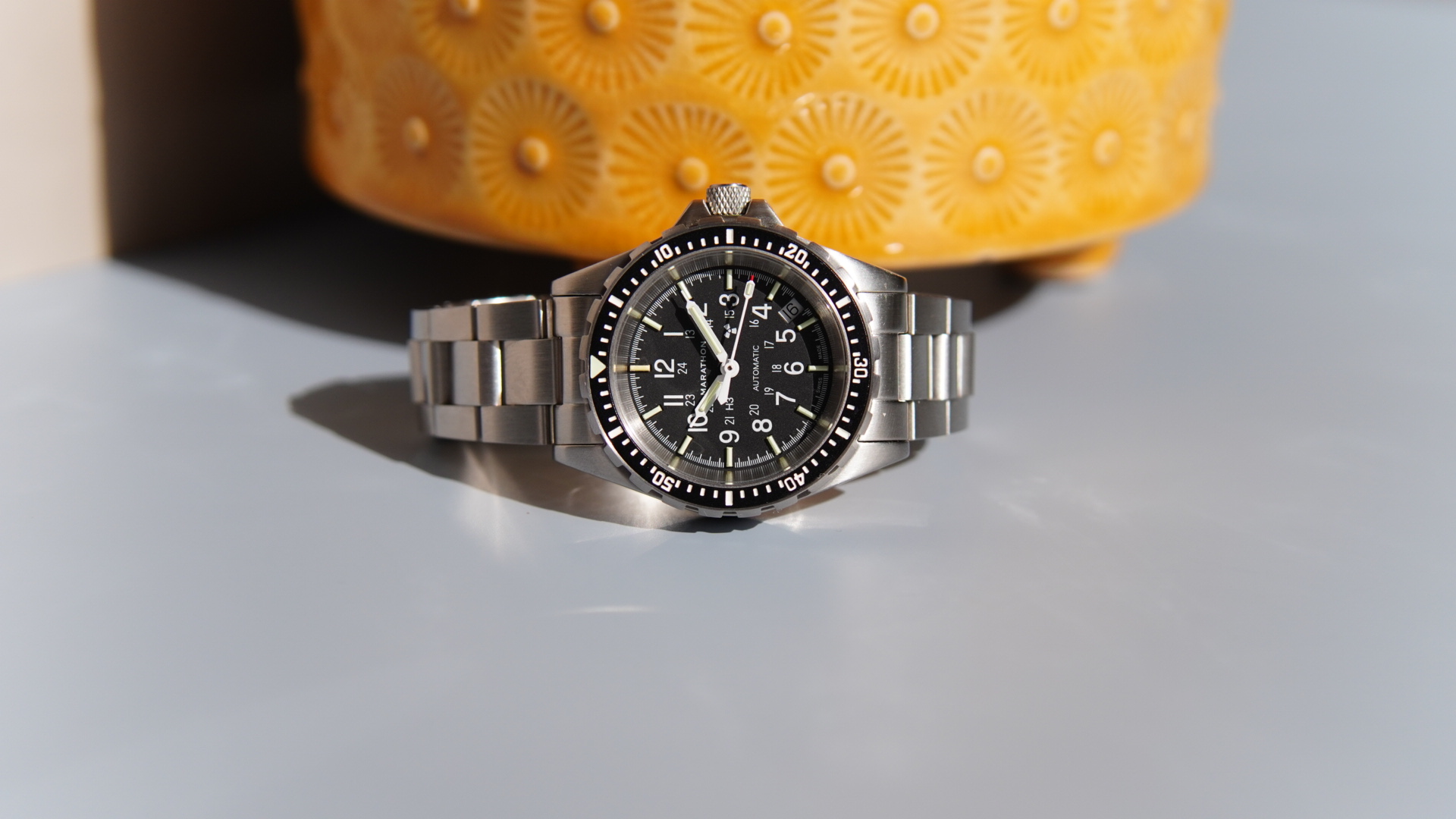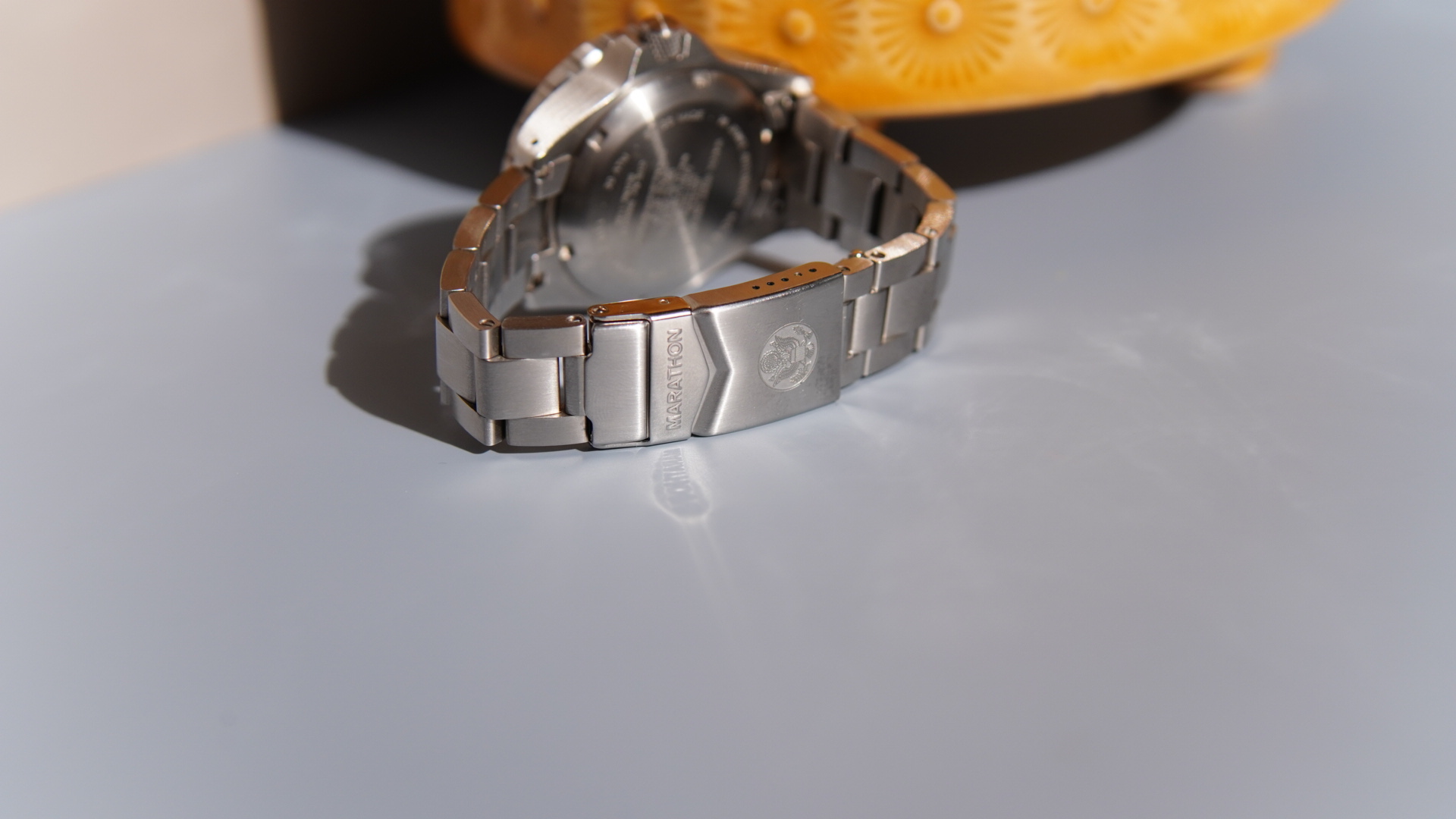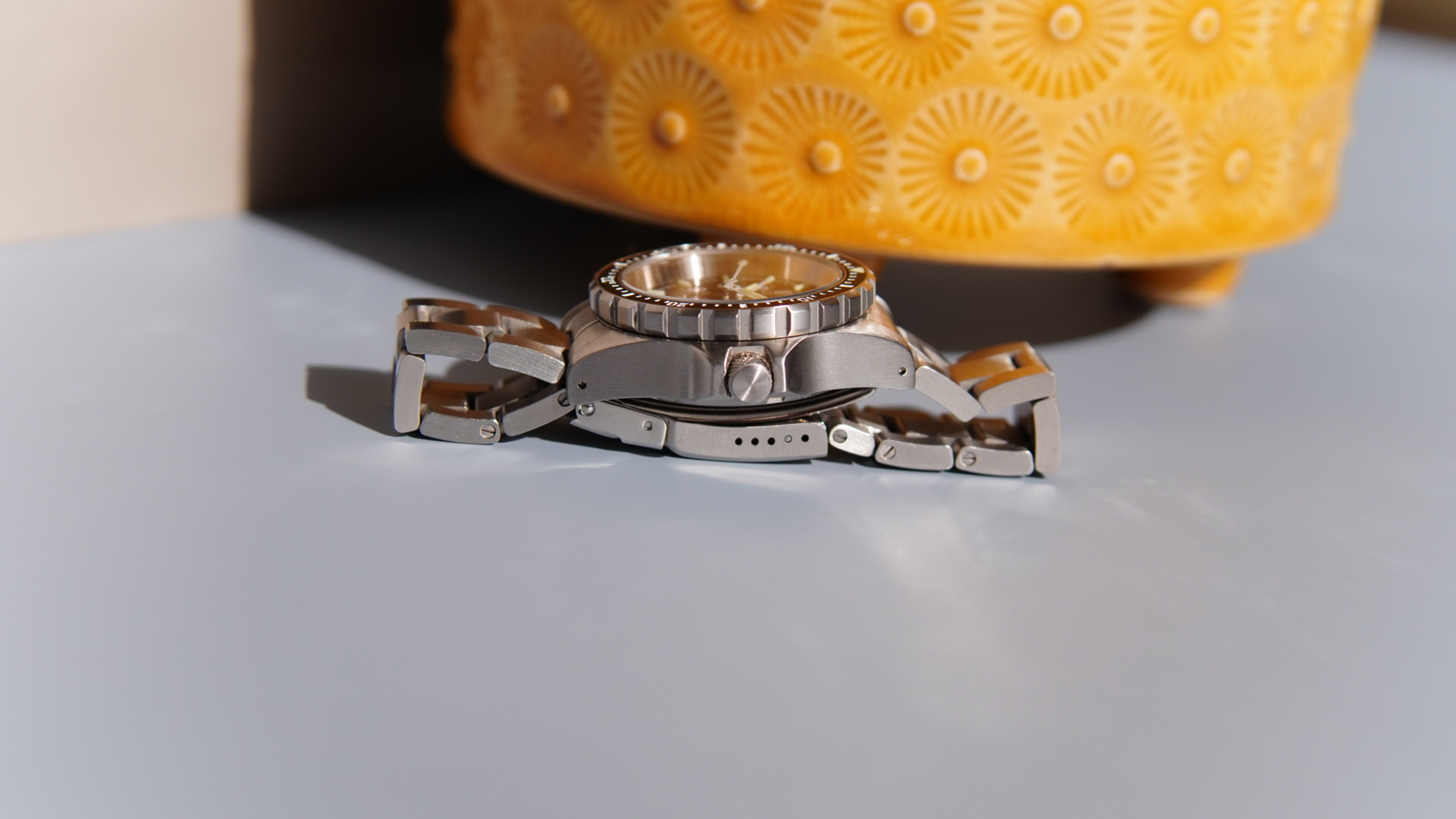
In the ever-evolving world of the best watches, there are few things which remain true for long. Tied to the turbulent world of fashion, trends can turn on a dime, leaving the en vogue piece of last week in the gutter by this one.
Still, if you had to pick out two of the hottest trends right now, it would be small watches and dive watches. Divers are having a real moment in the sun right now, thanks to changing tastes making them acceptable in the office and other more formal situations.
As for small watches? Well, that could be attributed to any number of things, but mostly people realising that clocks and dinner plates are meant for the wall and the dining table, respectively. Your wrist is much better suited to something appropriately sized.
So, enter the Marathon SAR 36mm. As a diddy dive watch, it's pretty much the most trendy thing on the market right now. It also packs in a neat military history. Let's kick on and see if it's any good.

Let's start with some specs. As you might have gleamed from the name, this watch packs everything into a 36mm stainless steel case. That also features a 43.5mm lug-to-lug width, making it perfect for smaller wrists.
It's worth noting, though, that the case sits 13mm thick. That's not insanely tall, but when combined with the dainty measurements elsewhere, it does look slightly out of place.
Still, Marathon has done everything it can to keep things feeling slim. The sapphire crystal, for example, sits completely flush with the bezel. There's no domes here, and it does stem the bleeding, so to speak.
Get all the latest news, reviews, deals and buying guides on gorgeous tech, home and active products from the T3 experts
Inside, users will find the capable third-party Sellita SW200-1 movement. That's a solid calibre, which is reliable and rugged – a perfect fit for the Marathon SAR range.
Users can also expect a cool 300m of water resistance. That's perfect for all of the diving needs you probably don't have, and is more than enough to survive the washing up and rainstorms which are more applicable for most of us.
One of the other cool features of the Marathon SAR range is that it uses Tritium gas tubes for lume. That does mean that the watch is radioactive – as denoted by the symbol on the dial – and makes for a real point of interest on this watch.

What's the Marathon SAR 36mm like to wear?
The first thing you notice on the wrist is the small case footprint. It's really apparent – particularly if you have daintier wrists. It's something of a rarity in the dive watch space, and it's a welcome addition.
With that being said, the height does soon come into play. It's not even like a 13mm thickness is that bad, but coupled with the other small measurements, you really do feel this protruding from your wrist.
Then there's the bracelet. The links are designed in a chunky way, but it's incredibly lightweight. That leaves it feeling a little flimsy – odd, for a watch which is used by search and rescue units around the world. The clasp is also somewhat archaic, though the stamp is a neat touch.
In something of a departure from my usual train of thought on these matters, I actually think this would be made better by changing the strap to a rubber strap or a NATO. The bracelet really isn't doing this any favours, though the watch itself is clearly very solid.
I wouldn't say I'm entirely sold on the lume, either. While it's a neat point of interest, it's practically a lot less bright than modern equivalents. That's hammered home by the triangle marker on the bezel, which clearly uses something a lot stronger.
It's not a deal breaker – how many of us really make use of the lume anyway? – but it's just something worth bearing in mind.

Is the Marathon SAR 36mm worth the money?
Here in the UK, the Marathon SAR 36mm retails at £1,425 (approx. $1.900; AU$2,770). That's more expensive than a lot of really strong competitors – Christopher Ward, Nomadic and Certina are just some of the brands I've used with strong divers in the c.£1,000 category.
That's not to say the Marathon isn't worth it. If you're a die hard fan of military/government-issue watches, or just love the history behind certain brands, this is a really neat pickup. It's also got some quirky features like the sizing and the radioactive lume which will appeal to a certain clientele.
While it's not the piece I'd pick personally, there's certainly a market for this watch. That's clear from the sheer volume of Marathon fans out there, but also the amount of people looking for a capable dive watch that is a shade smaller than others on the market.

Sam is an award-winning journalist with over six years of experience across print and digital media. As T3’s Senior Staff Writer, Sam covers everything from new phones and EVs to luxury watches and fragrances. Working across a range of different social media platforms alongside his written work, Sam is a familiar face for fans of T3. When he’s not reviewing snazzy products or hunting for stellar deals, Sam enjoys football, analog photography and writing music.
